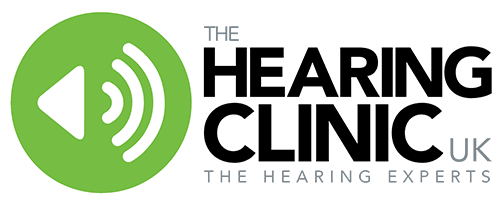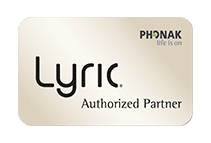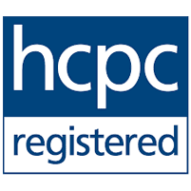Summary
Hearing loss impacts more than hearing—it affects mental health too. Explore the link and support options at The Hearing Clinic UK
In a world increasingly shaped by intelligent design and personalisation, hearing aid technology has undergone a quiet revolution. Once bulky and often stigmatised, modern hearing aids have transformed into sleek, connected, health-aware devices—capable of doing far more than just amplifying sound.
As of 2025, hearing aids are no longer just for “hearing better”—they’re becoming smart health companions, lifestyle enablers, and discreet communication hubs. At The Hearing Clinic UK, we’re at the forefront of this evolution, helping patients benefit from some of the most remarkable innovations to date.
Smarter than Ever: AI Is Leading the Way
One of the most significant advancements in hearing technology is the integration of artificial intelligence. Today’s leading hearing aids use AI-powered processors that analyse the sound environment in real time—automatically adjusting to different situations without the user lifting a finger.
This means better speech recognition in crowded rooms, improved background noise suppression, and more seamless transitions between environments like bustling restaurants, quiet offices, and windy walks outdoors. According to Hearing Aid UK, AI algorithms can now distinguish up to 55 million sound environments, offering a highly personalised and effortless listening experience.
This is more than a convenience—it’s a life-changer, particularly for those who have struggled with older-generation aids that needed frequent manual adjustment.
Health Monitoring in Your Ear
Hearing aids have also entered the wider health-tech arena. Many of the latest models now include biometric sensors that can monitor physical activity, heart rate, and even stress levels. With hearing loss already linked to cognitive decline and depression, these smart features allow for a more holistic approach to healthcare.
Think of it as a fitness tracker and a hearing device in one—an especially valuable tool for older adults managing multiple aspects of health. Some models even feature fall detection technology, allowing them to double up as safety devices for at-risk patients.
Streaming with Auracast: Welcome to the Broadcast Age
Bluetooth connectivity has long been a staple of modern hearing aids—but now, thanks to Auracast (a new standard within Bluetooth LE Audio), hearing aids are becoming more accessible in public venues.
Auracast allows hearing aid users to receive high-quality, low-latency audio directly from compatible broadcast sources—like airport announcements, theatre stages, or museum guides—straight into their ears. This technology is beginning to roll out in public infrastructure across the UK and Europe, and it’s set to completely transform accessibility for those with hearing loss.
It’s one of the most exciting developments in assistive tech: empowering users to stay effortlessly connected in group and public settings where previously they may have felt excluded.
Design Matters: Smaller, Smarter, Greener
Alongside these invisible features, visible improvements have been made too. Modern hearing aids are now sleeker and more ergonomic, with barely noticeable profiles and custom fits. Many are available in skin-toned or stylish finishes, with near-invisible in-the-ear options becoming increasingly popular.
Importantly, most modern hearing aids are now rechargeable, eliminating the need for fiddly battery changes and making them more eco-conscious. The move away from disposable batteries not only helps the environment but also saves users time, money, and stress.
Some manufacturers have even introduced solar-powered charging cases, appealing to travellers or those frequently on the move.
Consumer Electronics Meet Medical-Grade Care
One unexpected frontier of hearing care in 2025? Consumer tech.
Devices like Apple’s AirPods Pro 2 now offer personal sound amplification features—known as PSAPs (Personal Sound Amplification Products)—blurring the line between earbuds and hearing aids. While these are not a replacement for clinically prescribed devices, their rise is pushing innovation forward and raising public awareness about hearing health.
In fact, the NHS and various UK hearing organisations have encouraged people experiencing mild hearing difficulty to seek early intervention, even if they’re experimenting with consumer solutions first. However, audiologists caution that while OTC and tech-brand solutions can help in mild cases, they lack the precision, tuning, and medical oversight provided by a dedicated clinic.
At The Hearing Clinic UK, we bridge that gap—offering cutting-edge, medically approved hearing technology with professional guidance and personalised fitting.
Why This Matters Now More Than Ever
Hearing loss remains one of the most under-diagnosed and under treated conditions in the UK. According to the RNID, more than 12 million people across the UK have some form of hearing loss, yet it takes an average of seven years before they seek help.
By that point, many may have already experienced avoidable issues—such as cognitive strain, anxiety, isolation, or reduced quality of life.
But with today’s advanced hearing aids, the barrier to early intervention is lower than ever. They’re more discreet, more intelligent, and more user-friendly than ever before.
And at The Hearing Clinic UK, our mission is to ensure that patients not only hear better—but live better.
Want to Experience the Latest in Hearing Tech?
We offer free consultations at our award-winning clinics across the UK. Whether you’re ready to explore the newest models or simply curious about your current hearing health, our team is here to help.
🔗 Book your free consultation now
📍 Premium service. Personalised care. Industry-leading expertise.






